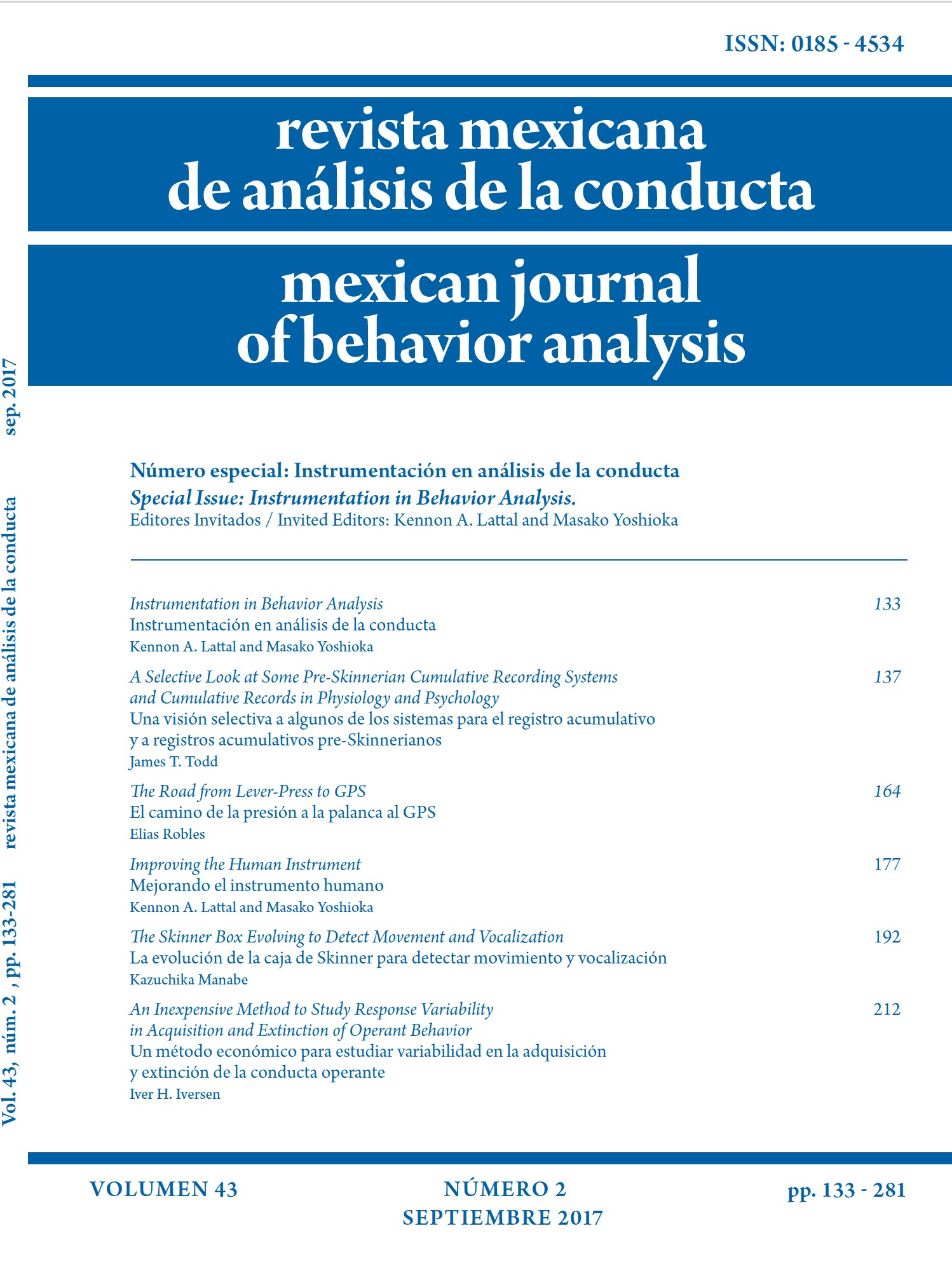The Skinner Box Evolving to Detect Movement and Vocalization
Main Article Content
Abstract
A typical Skinner box has three essential features: discriminanda, an operandum, and a device for delivering reinforcers, usually a feeder. These features correspond to Skinner’s three-term contingency consisting of a stimulus, a response, and a consequence. In a typical operant experiment, the operandum is used to measure a response topography that the animal emits easily and the baseline level of which is high enough to be conditioned as operant response, for example, lever pressing for rats and key pecking for pigeons. Because those responses can be detected using a microswitch, a human observer is not required to detect the response. However, the natural response repertoire of animals is not limited to such contact responses with the operandum. Many researchers have developed various automated experimental systems designed to detect responses other than contact responses with the operanda, for example, locomotion, turning responses, and vocalization. Recent technologies make it possible to detect responses such as these latter ones in real time without a human observer. The present paper provides a developmental history of how the components of the Skinner box have been modified to detect response topographies other than contact responding to a particular operandum.
